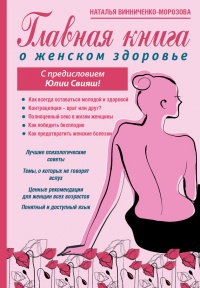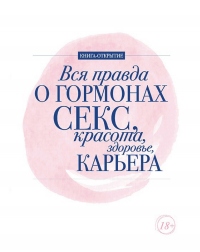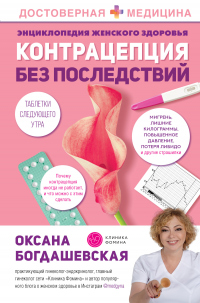Ознакомительная версия. Доступно 18 страниц из 89
228. U.S. Census Bureau. (2016). Educational attainment in the United States: 2015. Retrieved from https://www.census.gov/content/dam/Census/library/publications/2016/demo/p20-578.pdf.
229. U.S. Census Bureau. (2017). Percentage of the U.S. population who have completed four years of college or more from 1940 to 2017, by gender. Retrieved from https://www.statista.com/statistics/184272/educational-attainment-of-college-diploma-or-higher-by-gender/.
230. Вывод сделан на основании данных, приведенных в Goldin, C., & Katz, L. (2000). The power of the pill: Oral contraceptives and women’s career and marriage decisions. Journal of Political Economy, 110(4), 730–770. doi:10.3386/w7527.
231. Goldin, C., & Katz, L. (2000). The power of the pill: oral contraceptives and women’s career and marriage decisions. Journal of Political Economy, 110(4), 730–770. doi:10.3386/w7527.
232. Aud, S., KewalRamani, A., and Frohlich, L. (2011). America’s youth: Transitions to adulthood (NCES 2012-026). U.S. Department of Education, National Center for Education Statistics. Washington, D.C.: U.S. Government Printing Office.
233. Baumeister, R. F., & Vohs, K. D. (2004). Sexual economics: Sex as female resource for social exchange in heterosexual interactions. Personality and Social Psychology Review, 8(4), 339–363. doi:10.1207/s15327957pspr0804_2.
234. Regnerus, M. (2017). Cheap sex: The transformation of men, marriage, and monogamy. New York: Oxford University Press.
235. Aud, S., KewalRamani, A., and Frohlich, L. (2011). America’s youth: Transitions to adulthood (NCES 2012–026). U.S. Department of Education, National Center for Education Statistics. Washington, D.C.: U.S. Government Printing Office.
236. Schad, S. E., Henderson, M., Snell, E. G. et al. (January 2017). Understanding the growing achievement gap between the sexes: The power of mating on persistence and motivation. Poster presented at the annual meeting of the Society for Personality and Social Psychology, San Antonio, Texas.
237. Freeman, C. E. 2004. Trends in the educational equity of girls and women. Washington, D.C.: National Center for Education Statistics.
238. U.S. Department of Education, National Center for Education Statistics, National Center for Education Statistics, Higher Education General Information Survey, & Institute of Education Sciences (2017). Table 303.70: Total undergraduate fall enrollment in degree-granting postsecondary institutions, by attendance status, sex of student, and control and level of institution: Selected years, 1970 through 2026. In U.S. Department of Education, National Center for Education Statistics (Ed.), Digest of Education Statistics (2017 ed.). Retrieved from https://nces.ed.gov/programs/digest/d16/tables/dt16_303.70.asp.
239. Bae, Y., Choy, S., Geddes, C. et al. (2000). Trends in educational equity of girls and women. Washington, D.C.: National Center for Education Statistics.
240. Bureau of Labor Statistics, U.S. Department of Labor, & the Economics Daily (2013). July unemployment rates: adult men, 7.0 percent; adult women, 6.5 percent; teens, 23.7 percent. In Bureau of Labor Statistics, Economics Daily (2013 ed.). Retrieved from https://www.bls.gov/opub/ted/2013/ted_20130806.html.
241. Regnerus, M. (2017). Cheap sex: The transformation of men, marriage, and monogamy. New York: Oxford University Press; Baumeister, R. F., & Vohs, K. D. (2004). Sexual Economics: Sex as Female Resource for Social Exchange in Heterosexual Interactions. Personality and Social Psychology Review, 8(4), 339–363. https://doi.org/10.1207/s15327957pspr0804_2.
242. Baumeister, R. F., & Vohs, K. D. (2012). Sexual economics, culture, men, and modern sexual trends. Society, 49(6), 521. doi:10.1007/s12115-012-9596-y.
243. Pew research center analysis of decennial census (1960–2000) and American Community Survey data (2008, 2010), IPUMS.
244. U.S. Census Bureau. (2016). Table MS-2: Estimated median age at first marriage, by sex: 1890 to the present. Retrieved from https://www.census.gov/data/tables/time-series/demo/families/marital.html.
245. Pew research center analysis of 1960–2000 decennial census (2006–2015), American Community Surveys, IPUMS, and U.S. Census Bureau’s 2016 American Community Survey 1-Year estimates.
246. Reichert, T. (2010). Bitter pill. First Things: A Monthly Journal of Religion and Public Life, 203, 25–34.
247. Traister, R. (2018). All the single ladies: Unmarried women and the rise of an independent nation. New York: Simon & Schuster.
248. U.S. Census Bureau. (2017). Profile America Facts for Features: Unmarried and Single Americans Week. Retrieved from https://www.census.gov/content/dam/Census/newsroom/facts-for-features/2017/cb17-ff16.pdf.
249. Traister, R. (2018). All the single ladies: Unmarried women and the rise of an independent nation. New York: Simon & Schuster.
250. Mather, M. and Lavery, D. (2010) In U.S., proportion married at lowest recorded levels. Population Reference Bureau. Retrieved from https://www.prb.org/usmarriagedecline/.
251. U.S. Census Bureau. (2016). Table MS-2: Estimated median age at first marriage, by sex: 1890 to the present. Retrieved from https://www.census.gov/data/tables/time-series/demo/families/marital.html.
252. Martin, J. A., Hamilton, B. E., Osterman, M. K. et al. (2018). Births: Final data for 2016. National Vital Statistics Reports: From the Centers for Disease Control and Prevention, National Center for Health Statistics, National Vital Statistics System, 67(1), 1–55.
253. Stobbe, M. (2017, May). Correction: US births and deaths story. Retrieved from https://www.apnews.com/cfed1e4019b545c19589c5a372257735?utm_campaign=SocialFlow&utm_source=Twitter&utm_medium=AP.
Ознакомительная версия. Доступно 18 страниц из 89
























